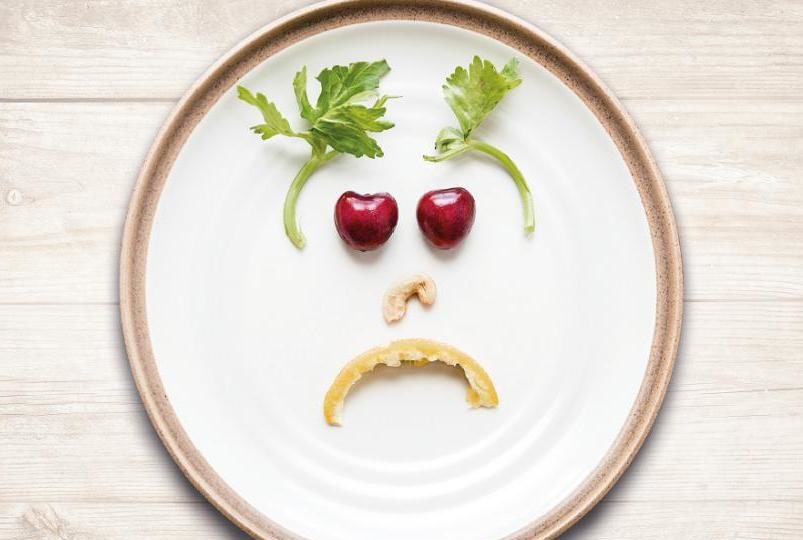It’s not uncommon these days to browse the isle of your local supermarket and be swamped by products proudly branded with stickers that start with ‘no added’ or end in ‘free’. It’s no surprise then that some food groups are often thought of as the bad guys. Gluten, dairy, nuts, caffeine – yes, we’re talking about the common tummy-upsetting culprits! The NHS advises we eat a healthy and balanced diet that incorporates all food groups (fruit and veg, starchy carbohydrates, proteins, dairy and unsaturated fats). Cutting a food group out should only be done if necessary, such as in the case of suffering from a food intolerance, which is typically another area for confusion. In fact, misdiagnosing food intolerances has become so popular that a new word has even been coined for it – nutrichondria. This refers to a preoccupation with the negative parts of your diet and a tendency to self-diagnose food intolerances based on supposition or flawed evidence. Up to one in three Brits suffer from this condition, with 32 percent believing they’re dairy intolerant and 24 percent believing they’re intolerant to gluten. Here’s how to determine when you have an intolerance.
What is a food intolerance?
“Food intolerances don’t involve the immune system,” says Dr Claudia Gravaghi (doctify.co.uk). “They cause an unpleasant reaction to specific foods or food ingredients that the body cannot break down or digest. You may experience abdominal pain, diarrhoea, gas, nausea or stomach rumbling. Symptoms occur slowly, with late onset, and they are long lasting. Usually, a reasonable portion of food is needed to cause a reaction, although some people can be sensitive to small amounts.”
Intolerances are not to be confused with food allergies, which are different. “Food allergies involve the immune system, which recognises the food protein as a threat, causing the release of antibodies, (igE and igG) and triggering an inflammatory response. Symptoms manifest rapidly – within seconds or minutes after eating the food. Even a tiny trace of the food can cause the reaction.” According to data from YorkTest (yorktest.com), 76 percent of people were suffering with symptoms of a food intolerance for over a year before they sought to get tested. “While bloating and IBS are certainly indicators of a food intolerance, headaches and migraines, low mood, tiredness, skin conditions, such as acne and eczema, and joint pain are all signs, too,” explains Dr Gill Hart, biochemist and scientific director at YorkTest. “It’s always best to get checked out by your doctor first to rule out anything serious. If your GP gives you the all clear, but you’re still not feeling at your best, it may be time to take a closer look at your diet.”
How to diagnose a food intolerance?
“Diagnosing a food intolerance is often a process of elimination,” advises dietitian Rick Miller (a2milk.co.uk). “You may experience changes in bowel habits such as constipation, diarrhoea, bloating or abdominal cramps and, more rarely, skin issues or headaches.”
NHS guidelines for diagnosing a food intolerance are to keep a food diary and monitor what you eat, recording how the foods you eat make you feel and when the symptoms come on. By doing so, you may be able to pinpoint what foods are a trigger. After this, you could try an elimination diet, for which you purposely stop eating suspected foods and monitor the effect this has. Do this for two to six weeks and see if your symptoms improve. After this period is up, reintroduce the foods to see if your body reacts differently.
Another option is to try a home food intolerance test. “The most reliable tests are those that look for food-specific IgG reactions in your blood,” says Dr Gill. “In other words, these are tests that analyse your blood’s reaction to proteins in foods. Always look for a provider that tests for all four IgG antibody subtypes, to give you a full picture. It’s not uncommon for people to be intolerant to around four to five ingredients. You may suspect that one ingredient could be causing you trouble, but it’s always best to get tested as your trigger might actually be something else. For example, every time you eat bread you might feel lethargic and suspect it may be gluten but it could in fact be yeast. The good news is that a food intolerance isn’t necessarily for life. You might be able to reintroduce trigger foods to your diet again after a period of rest. It’s all about finding your own personal limits of how much of a particular food, or foods, your body can tolerate.”
Common dietary complaints
Nutritionist Frida Harju-Westman (lifesum. com) reveals the typical foods and drinks that either cause intolerances or are often cut from diets. Here she suggests alternatives to ensure you still receive the health benefits.
Lactose (dairy)
Approximately 65 percent of people have a reduced ability to digest lactose after infancy, according to the National Library of Medicine in the United States. This is due to a reduced production of lactase, the digestive enzyme that breaks down dairy products. People with a lactose intolerance may experience bloating, nausea and abdominal pain around 30 minutes following consumption.
Dairy is an essential component of a healthy diet, as these products tend to be rich in important nutrients such as calcium and vitamin D so, if you are lactose intolerant, be sure to eat fatty fish such as sardines, which are a good source of calcium, as well as certain plant-based milks fortified with vitamin D and calcium
Gluten
There has definitely been a rise in the popularity of gluten-free diets – more and more people are ordering gluten-free at restaurants, as well as leading a gluten-free lifestyle. If you have been diagnosed with a wheat intolerance, or suffer from coeliac disease, you should of course avoid it and be sure to find another source of important vitamins. While gluten itself does not have any nutritional value, foods such as wheat, rye and oats, in which gluten is found, are a great source of vitamin B and iron.
Caffeine
Despite so many people trying to cut down on it, coffee has plenty of health benefits. For example, when drunk in moderation, it can actually help to improve your concentration, as well as providing antioxidants to help your body fight disease. However, if coffee is making you suffer from abdominal pain and sweats, consider drinking green tea instead. Green tea contains less caffeine than coffee but will still act as a mild stimulant, whilst simultaneously improving your health due to the number of antioxidants and flavonoids it contains.



















